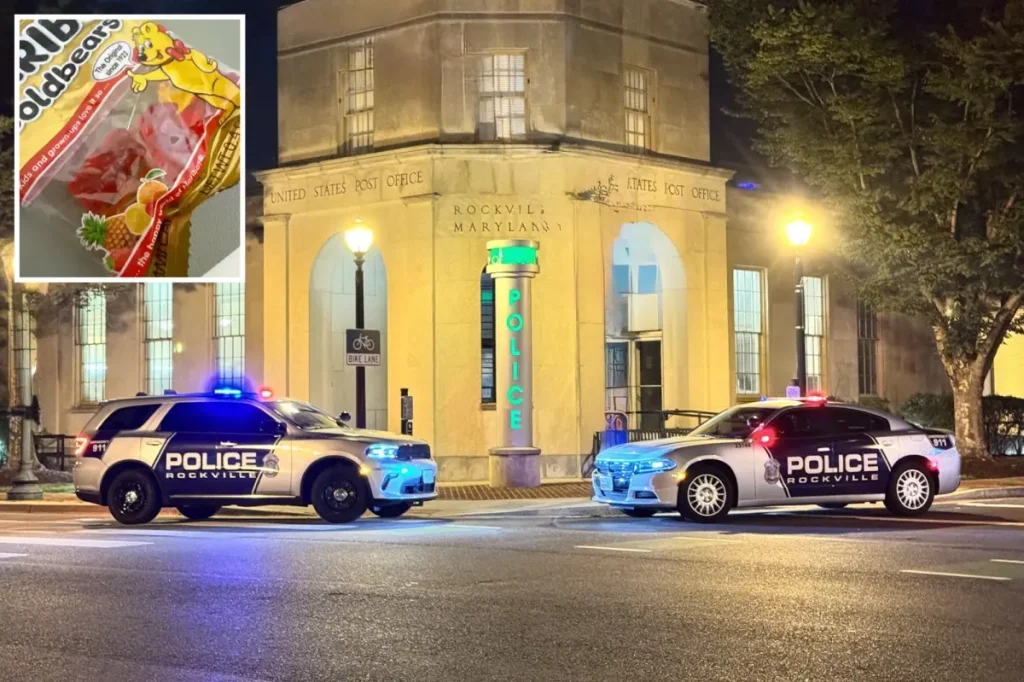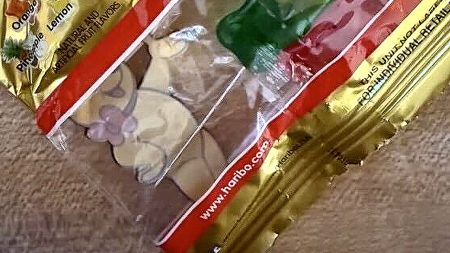HALLOWEEN CANDY SCARE REVEALED AS CHILD’S PRANK IN MARYLAND TOWN
In a twist that left a Maryland community both relieved and bemused, what initially appeared to be a sinister Halloween candy tampering case turned out to be nothing more than a child’s mischievous prank. The incident began when Rockville police issued an urgent Halloween night warning to local families after receiving a report about a sewing needle discovered in trick-or-treat candy. Authorities quickly sounded the alarm, sharing photographs of silver sewing needles visibly embedded within unopened packages of gummy bears, and specifically warned residents about candy allegedly distributed in the area between Welsh Drive and West Edmonston Drive. The community response was immediate – parents frantically inspected their children’s Halloween hauls, social media buzzed with concerned messages, and what should have been a night of festive celebration instead became clouded with worry about potential dangers lurking in innocent-looking treats.
However, the investigation took an unexpected turn when police discovered the true source of the alarming candy. Rather than being the work of some malevolent Halloween saboteur, the needles had been deliberately planted by a 9-year-old child from the very household that reported the incident. According to police statements, the child’s parents had been using a magnet to check their trick-or-treat candy when it detected metal within the gummy bear packages. What the parents initially believed to be a serious threat was revealed to be their own child’s handiwork, as the youngster eventually confessed to placing the sewing needles in two gummy bear packages. The 9-year-old apparently came forward with the truth after witnessing the considerable public and media attention their prank had generated, perhaps overwhelmed by the magnitude of the response their simple act of mischief had triggered in the community and beyond.
The Rockville City Police Department was quick to issue a follow-up statement once the truth emerged, reassuring residents that there had been no actual threat to public safety. “The incident was a hoax carried out by a 9-year-old child within the household where the report originated,” police clarified in a Facebook post that must have brought collective sighs of relief across Rockville. Chief Jason L. West commended his team’s response to the situation, noting, “This incident understandably raised concern within our community, and we are grateful that it did not present a broader threat to public safety.” The police department’s thorough investigation confirmed there were no other legitimate reports of tampered candy from Halloween night or the days that followed, suggesting that despite the momentary panic, the holiday treats distributed throughout the community had been perfectly safe all along.
This incident highlights the evolving nature of Halloween safety concerns in American communities. For decades, parents have been warned about the potential for razor blades or other harmful objects being hidden in Halloween candy – a fear that persists despite the rarity of such occurrences. These warnings have become something of a Halloween tradition themselves, passed down through generations of trick-or-treaters. In recent years, however, parental concerns have shifted somewhat. With the legalization of recreational marijuana in many states, authorities now increasingly focus on helping parents identify counterfeit candy products that might contain THC or other substances inappropriate for children, rather than focusing exclusively on physical tampering.
The Rockville incident demonstrates how quickly fear can spread through a community, particularly when it involves children’s safety. What began as a child’s misguided prank – perhaps inspired by those very same Halloween urban legends that parents have whispered about for generations – rapidly escalated into a community-wide scare. The power of social media and instant communication amplified the concern, with images of the needle-embedded candy circulating widely before the truth was uncovered. This case serves as a reminder of the delicate balance communities must strike between maintaining appropriate vigilance for genuine threats and avoiding unnecessary panic based on unfounded fears or, in this case, a child’s Halloween hoax.
Interestingly, this incident occurred against the backdrop of a legitimate candy recall that had nothing to do with deliberate tampering. Just days before Halloween, Zingerman’s Candy Manufactory recalled numerous full-size Peanut Butter Crush and Ca$hew Cow bars due to potential allergen mislabeling – a reminder that food safety concerns can be very real, even if they stem from manufacturing errors rather than malicious intent. The juxtaposition of this genuine recall with the Rockville hoax illustrates the complex landscape of food safety issues that parents must navigate, especially during holidays centered around treats and candy distribution. As Halloween festivities fade into memory for another year, the Rockville community can return to normal, perhaps with a heightened awareness that sometimes the scariest Halloween stories are those we create ourselves – or in this case, those crafted by a 9-year-old with a needle, some gummy bears, and an imagination that temporarily spooked an entire town.












